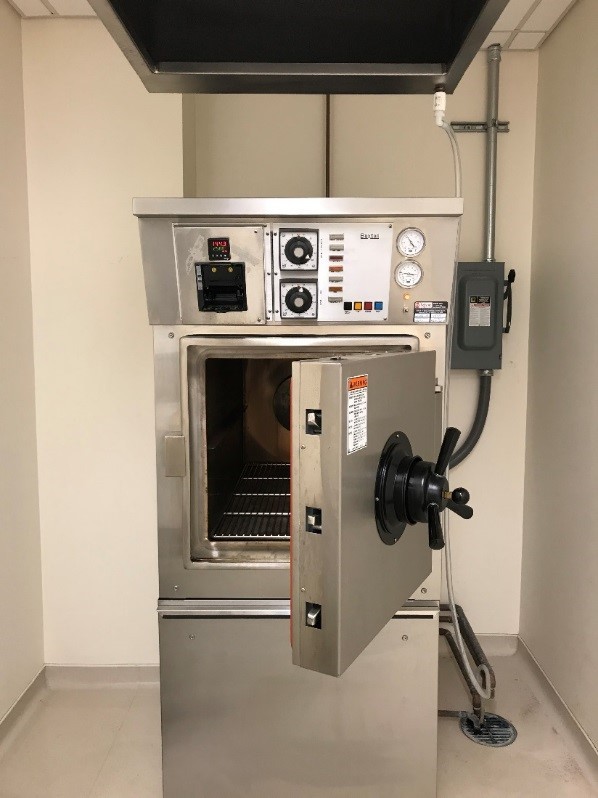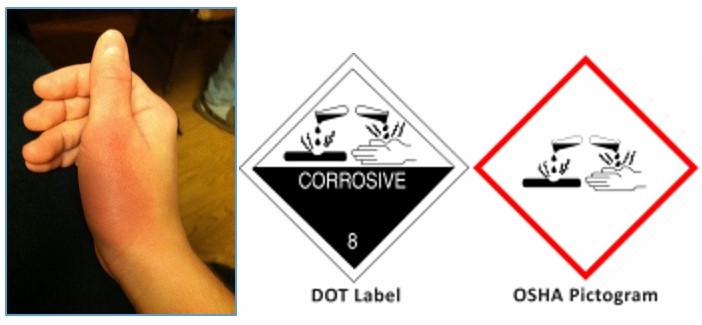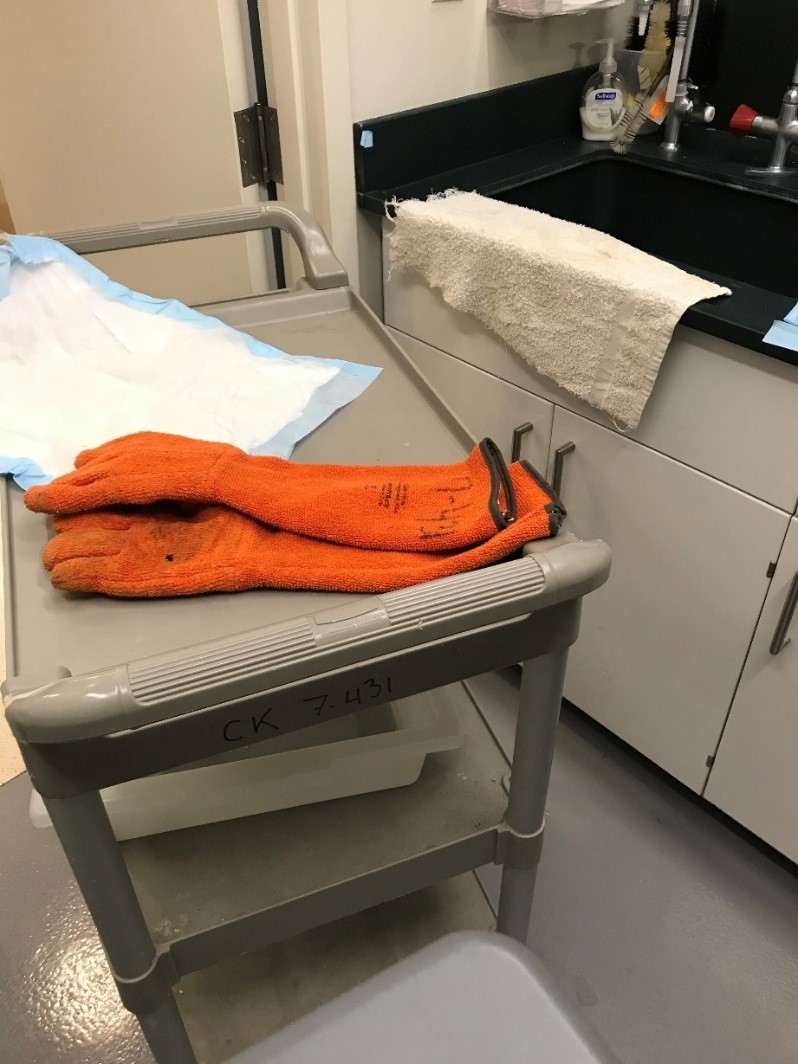Lab Autoclave & Automated Equipment Washer Safety Awareness
(Related Links: Laboratory Autoclave User Checklist & Policy)
Widely used in microbiology, medicine and veterinary medicine, sterilization laboratory autoclaves are pressure chambers working at high temperature and pressure to kill or deactivate biological agents (viruses, bacteria, spores, fungi etc.). They are used to sterilize equipment (such as surgical instruments and laboratory glassware), supplies (e.g. growth media) and to decontaminate regulated medical waste.
Automated equipment washers (AEW) such as rack washers, commercial dishwashers and cage washers are used to clean and wash items. They often involve the use of cleaning agents such as, detergents or cleaning chemicals that may be caustic and/or corrosive, which can damage the skin.

Hazards associated with laboratory autoclave and automated equipment washer use include:

- Chemical hazards
- Biological hazards
- Physical hazards
- Heat burns
- Steam burns
- Hot liquid scalds
- Hand and arm injuries
- Body injuries (other than hand and arm)
- Electric shock/electrocution due to exposed wiring and circuitry
- Slips or trips on protruding pipes or wet surfaces
- Entrapment in walk-in style units
- Snagging or entanglement on levers and door wheels
- Pinches from sliding or hinged doors
- Bursting during an operational malfunction
- Cuts or puncture wounds from mismanaged sharps on surrounding work surfaces
Training is strongly encouraged for employees operating a laboratory autoclave or AEW. Training should include EH&S-provided safety awareness training and Supervisor/service provider operational training. Service provider training may be arranged through your Supervisor or direct through the service provider by calling their service number. An initial, live, training session provided by EH&S, upon request, should be attended prior to starting operation. The attendees of the live EH&S training session will then be entered into RASCAL which then will prompt users for future, biannual training sessions online.
Personal protective equipment (PPE) must be used when operating a laboratory autoclave or AEW. It includes: long pants or equivalent, closed-toe shoes, lab coat, splash apron, chemical or heat-insulating gloves, as applicable, and face shield.

Periodic inspection should be performed by the manufacturer/authorized service provider. However, a basic visual inspection should be performed monthly by the responsible party and before each use by the operator. EH&S has created a recommended Laboratory Autoclave User Checklist to guide the inspection process. Service provider contact information should be posted on the site of operation. Note, manufacturer’s procedural and instructional documents should be readily available and must be followed.
EH&S has created a recommended laboratory autoclave warning sign that may be posted on the entrance to rooms with no current signage. The sample sign illustrated below is available, upon request, customized to the applicable campus:

For more information regarding risk management, operation safety guidelines, and quality assurance please refer to our Policy or contact EH&S for additional information.
